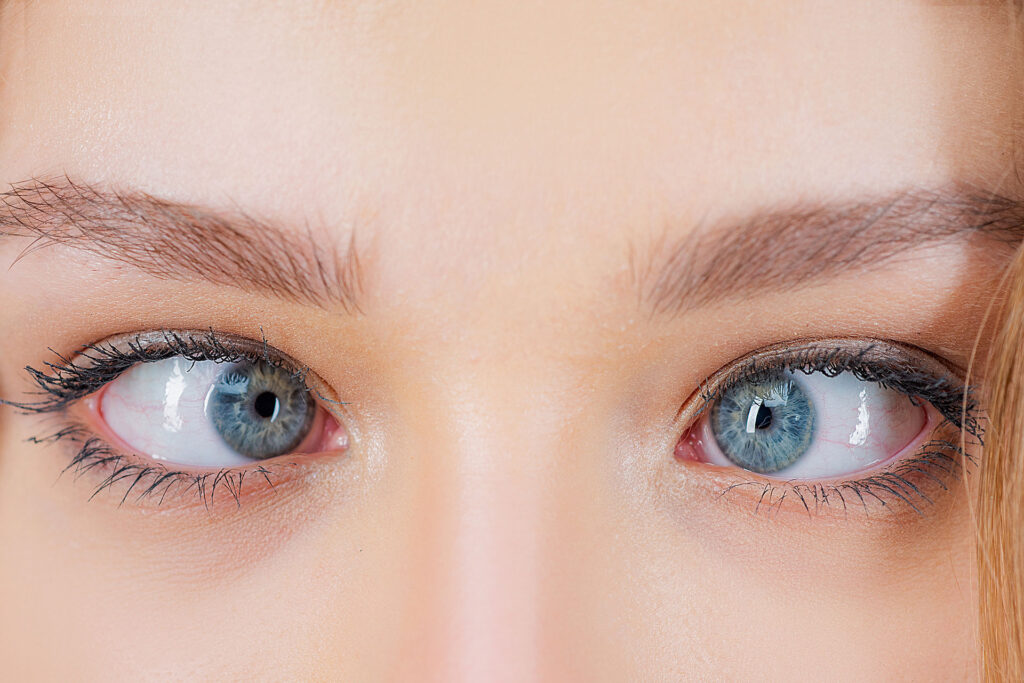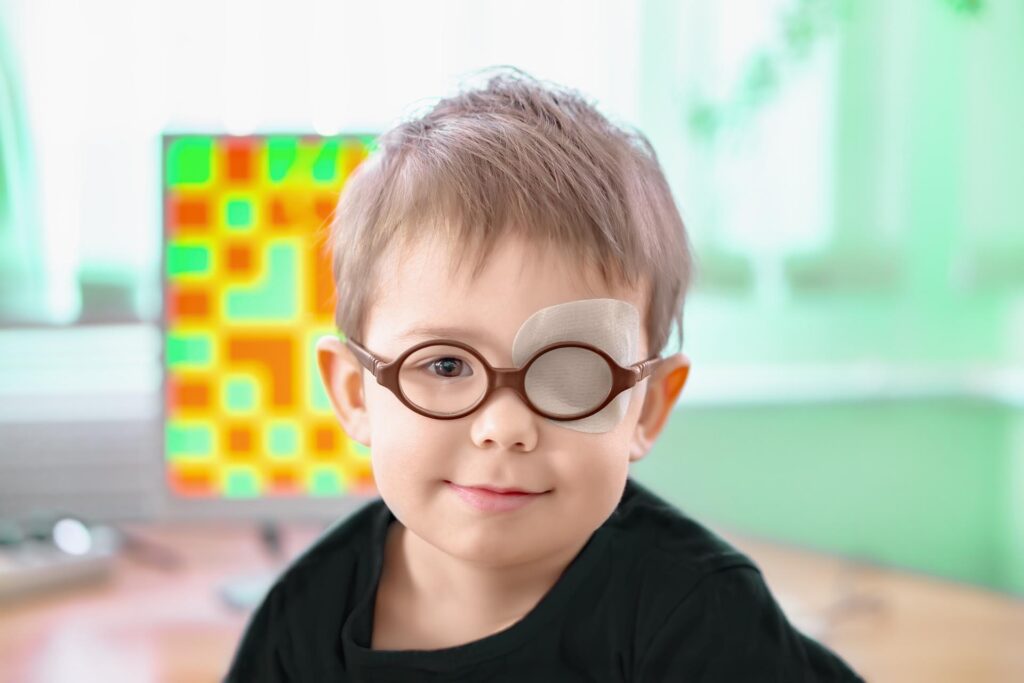Strabismus (squinting)
What is strabismus?
The persistent or recurring misalignment of one or both eyes is called strabismus, commonly known as squint. This means both eyes are not looking in the same direction. An eye deviates from the normal visual axis, inwards when squinting inwards or outwards when squinting outwards. Squinting up or down may also occur.
It can be congenital, but it can also occur at any age. Cross-eyed people often appear disfigured by the misalignment of their eyes, which is a heavy burden. Squinting is not just a cosmetic defect (a certain ‘silver stare’ can even look cute to an outsider), it is often associated with a severe visual impairment. If squinting is detected early, it can be treated by an ophthalmologist. The earlier squinting occurs and the later it is treated, the more severe the visual impairment becomes and the more difficult it becomes to treat. Even at the age of three, the chances of successful treatment are significantly lower. Normal visual acuity can usually no longer be achieved after school age, even with treatment. Treating babies and small children as early as possible is particularly effective.
Pseudostrabismus in children
When a child looks sideways, part of the eye disappears and the child may appear to be squinting. For this reason, parents often visit the ophthalmologist. In babies and young children, the pupillary distance is large and the inner edge of the eye is covered by the eyelid. When this occurs in babies, the doctor speaks of pseudo strabismus. There is no real misalignment of the eye axis here, a very wide or very narrow bridge of the nose can cause this illusion.
How does amblyopia develop?
In a cross-eyed child, the image in one eye will not coincide with the image in the other eye. The brain increasingly cancels the image of one eye. The child is becoming less and less in this eye, although the eye is built and functions normally. This is how amblyopia develops. Since it is important to preserve the vision of both eyes, appropriate training must begin immediately.
How is amblyopia treated?
In order to diagnose ametropia, some examinations are necessary. First, the visual acuity is measured and a shadow test is made. Then a complete examination of the eye is performed. Thus, the amblyopia is diagnosed in the best possible way. In order to stimulate the weak-sighted eye to return to normal activity, the healthy eye is covered or clouded with drops. In this way, the improvement of the visual acuity of the weak-sighted eye is forced.
When should treatment be started?
Treatment should be started as early as possible. The reasons for treatment should be explained to the child as soon as they understand them. This is the only way for the child to cooperate effectively. A doll can be helpful for explanation. If the child attends a kindergarten, the educators should be informed, in the case of school-age children, the teachers. If not already known from other cases, brief information about the reasons and the goal of the treatment should be provided.
How long is the treatment duration?
The duration of treatment varies from case to case. However, it is true that the younger the child, the faster the increases in visual acuity. Vision in the healthy eye may temporarily decline, but this will return to normal once the eye is used normally. The occlusion (covering) of the healthy eye depends on the degree of visual impairment and can be continued for a few weeks, months or even years, depending on the therapy. Depending on the treatment, the coverage can be permanent or intermittent. The success of the treatment is monitored by the doctor and the treatment is adjusted accordingly. The aim is to achieve the same visual acuity in both eyes, this will ensure success and avoid a relapse. Throughout childhood, examinations will be necessary at certain intervals.
While occlusion improves visual acuity in the weak eye, it has no effect on strabismus. Surgical correction should be provided for strabismus. This can be performed once the weak sight is resolved.
How should the eye be covered?
The coverage should be comfortable yet effective. It should be avoided that the child can cheat. Appropriate occlusions are available in pharmacies. There are different sizes depending on the age of the child. The occlusion must be in direct contact with the skin in order to achieve good results.
How to prevent the child from removing the occlusion?
With a small child, the occlusion can be fixed with an additional band-aid or mitts can be used to prevent the occlusion from being pulled off. An older child should be made aware of the need and encouraged to cooperate.
Can you offer additional support?
The key to success is wearing the occlusion conscientiously. If there is gradual progress, the child will be encouraged. Of course, praise or a reward is very helpful.
Does a child have to see an ophthalmologist?
The same demands are placed on the eyes of children and young people as on the eyes of adults. You need good visual acuity for distance and near vision, good coordination of both eyes and stereo vision for good 3-dimensional perception.
Eye-brain development takes place in the first few years of life. Until adolescence, she is prone to functional disorders of the monocular and binocular vision. Seeing is a basic prerequisite for positive general development. The eyes are the most important sensory organ.
It can lead to lifelong vision loss if damage to the eye, ametropia and strabismus are recognized too late. This affects the training and thus also the choice of career. In order to prevent this damage, an adapted therapy is required, which is carried out consistently.
There is a pediatric check-up, but this is often not enough for the eyes. For children under the age of 12, only an ophthalmologist can carry out a professional eyeglass determination. For this reason, a check-up is recommended no later than the 3rd year of life, even if the behavior and family history are normal.
The following abnormalities can indicate a visual defect:
-
Eye trembling (nystagmus)
-
Limited eye mobility
-
drooping eyelid (ptosis)
-
Excessive blinking, squinting of one eye
-
Head tilt
-
Headache
-
blurred vision
-
Pupils appear milky white
-
Squinting (strabismus) - the permanent or temporary deviation of one eye
-
Tired easily when reading or doing computer work
-
photophobia
-
Double vision
Sudden squinting can be the first sign of a serious condition. No matter what age, it must be clarified as soon as possible.

